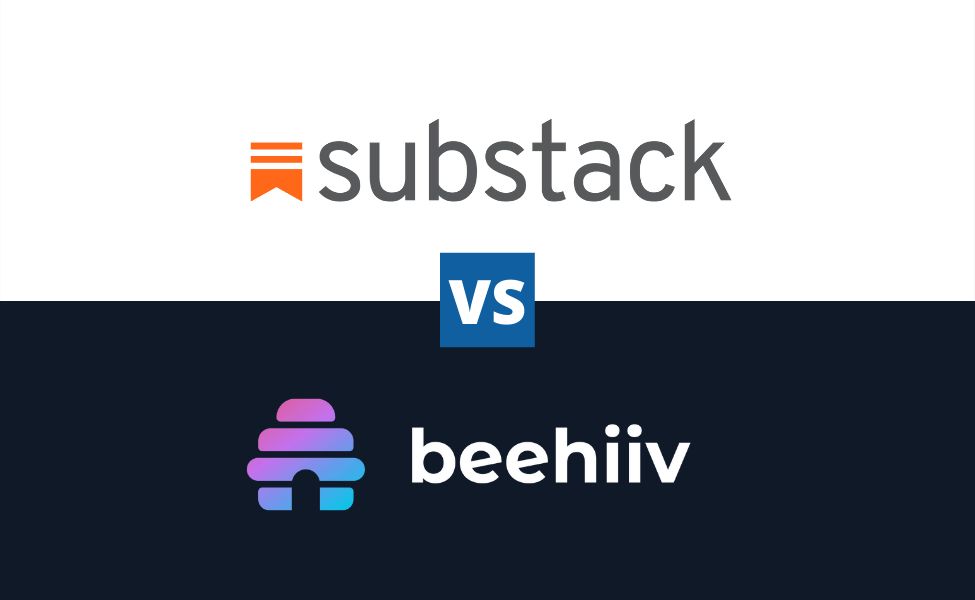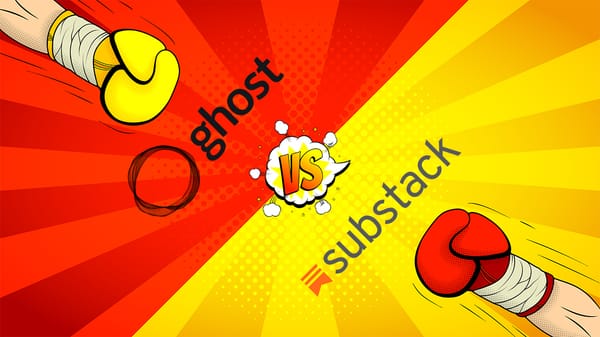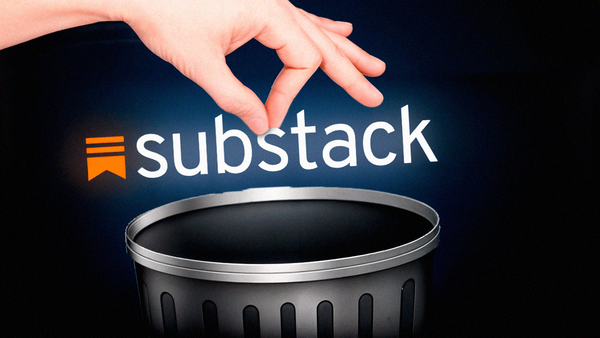Kit (previously ConvertKit) or MailerLite showdown: choosing your email ally
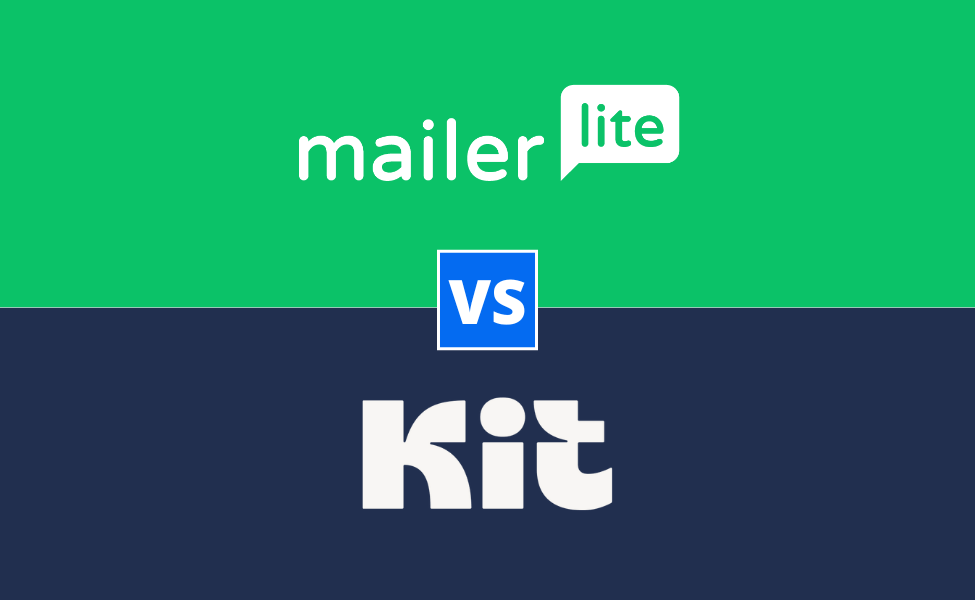
Kit vs MailerLite is the showdown I'm tackling today, and, oh boy, it's a hot topic.
Picking the right email marketing tool can feel confusing, I know that!
You might have so many questions, like which one is easier to use, or which gives you more bang for your buck!?
Well, let's find out.
I'm Tiago Silva, and what you are about to read is based on my experience of being a creator since 2020. The goal is to give you the best info to help you pick the right tool for your newsletter, while I write about something I enjoy.
Kit vs MailerLite Summary
The main difference is that Kit is better for creators monetizing content via newsletter advertisement and memberships. Meanwhile, MailerLite is cheaper and more suited for creators with an existing blog.
The main similarities between Kit and MailerLite are they have great customization options, free plans for up to 1,000 subscribers, and nice automated email sequences.
Kit is extremely popular for creators focused on monetizing content for a good reason, as you are about to see in this comparison. So, it's not just "marketing slang" when they promote earning money on their site.
On the MailerLite side of things, they provide massive value for how much it costs. This means MailerLite does the same things as most other tools at a lower cost without compromising on quality.
Kit overview
Kit is one of the best alternatives to Substack and one of the best newsletter services on the market.
It was created in 2013, and Kit focused on being THE email service for creatives.
As you will see, they have all the tools to run a personal newsletter, monetizing it and earn a full-time income.
Things I like about Kit:
- Free plan (up to 1,000 subscribers);
- Automated email sequences;
- Integrations (example, Zapier);
- Great Monetization (newsletter memberships, digital products, newsletter ads and more);
- Low fees (0,6% + payment processing fees);
- Analytics tools (including click tracking and subscriber engagement score);
- Email segmentation (send emails based on tags);
- Newsletter referral program.
Things I don't like about Kit:
- Their landing page is a bit limited;
- Not good for blogging and SEO;
- Lack of importing/export posts.
MailerLite overview
MailerLite is one of the cheaper options to run a newsletter in the market.
This service has been around since 2005 and has great customization while still being easy to use.
In recent times, it has also been improving as a blogging tool, making it easier for creators to publish their content from a single platform.
MailerLite is the email service I use for my newsletter!
Things I like about MailerLite:
- Great free plan (up to 1,000 subscribers);
- Email automation;
- Great templates and customization options (with and without code);
- Multiple newsletters in the same account.
- Good email analytics;
- Integrations;
- 0% fees;
Things I don't like about MailerLite:
- Blogging capabilities need improvement;
- Paid memberships has flaws;
- Requires physical address to enable sending.
- Incomplete SEO features;
Content Creation
Now, I'll explore the process of creating content with each tool.
Content creation experience on Kit
The writing experience in Kit is pretty good.
The editor looks clean: with the content on the left and settings on the right (to customize font size, colors, etc.).
When you start creating a newsletter, you can start with a blank page or use one of the templates available, which makes the newsletter prettier and saves time with formatting.
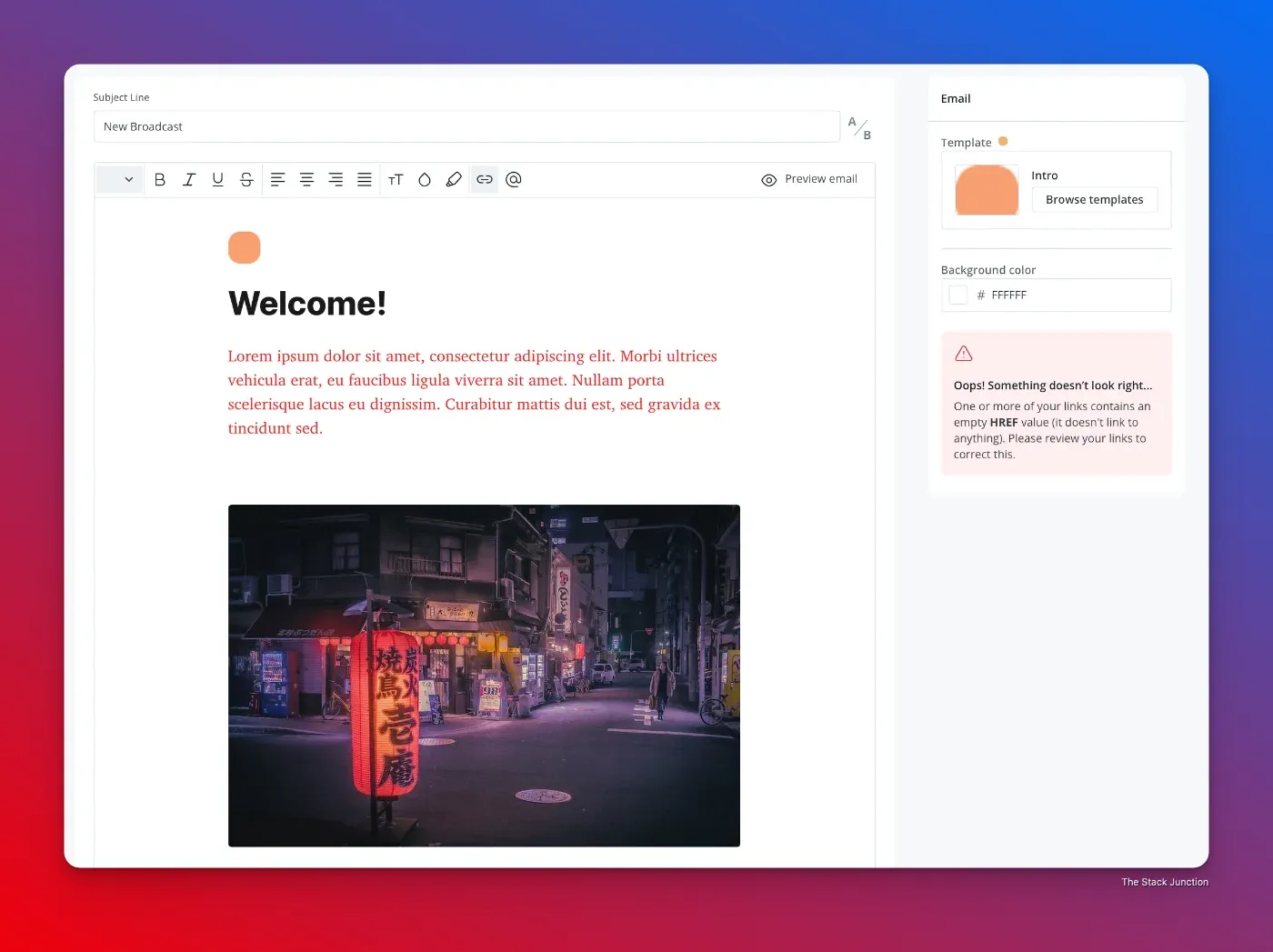
But better than an editor that looks clean is one that works well and doesn’t limit you from creating content. So, let me tell you that you are in good hands with Kit.
Here are some of the main content blocks you can find on the editor:
- Text formatting;
- Files;
- Layouts;
- Products;
- Countdown times;
- HTML blocks.
If I have to point out a weakness here, I’ll mention that the HTML block doesn’t always work as intended, and I'm not sure it's my fault (but it could be).
Content Creation Experience on MailerLite
MailerLite gives a lot of versatility to its creators, offering three different editors to work with:
- Drag & Drop Editor: similar to most Drag & Drop editors from major platforms like WordPress, and Squarespace, and is super easy to use.
- Rich-text Editor: lets you write a newsletter with only text, allowing you to focus on just writing.
- Custom HTML Editor: this lets you create a newsletter from scratch exactly as you want with code.
For most people, the Drag & Drop Editor is the right decision. It will give you the right combination of flexibility, customization, and easy of use.
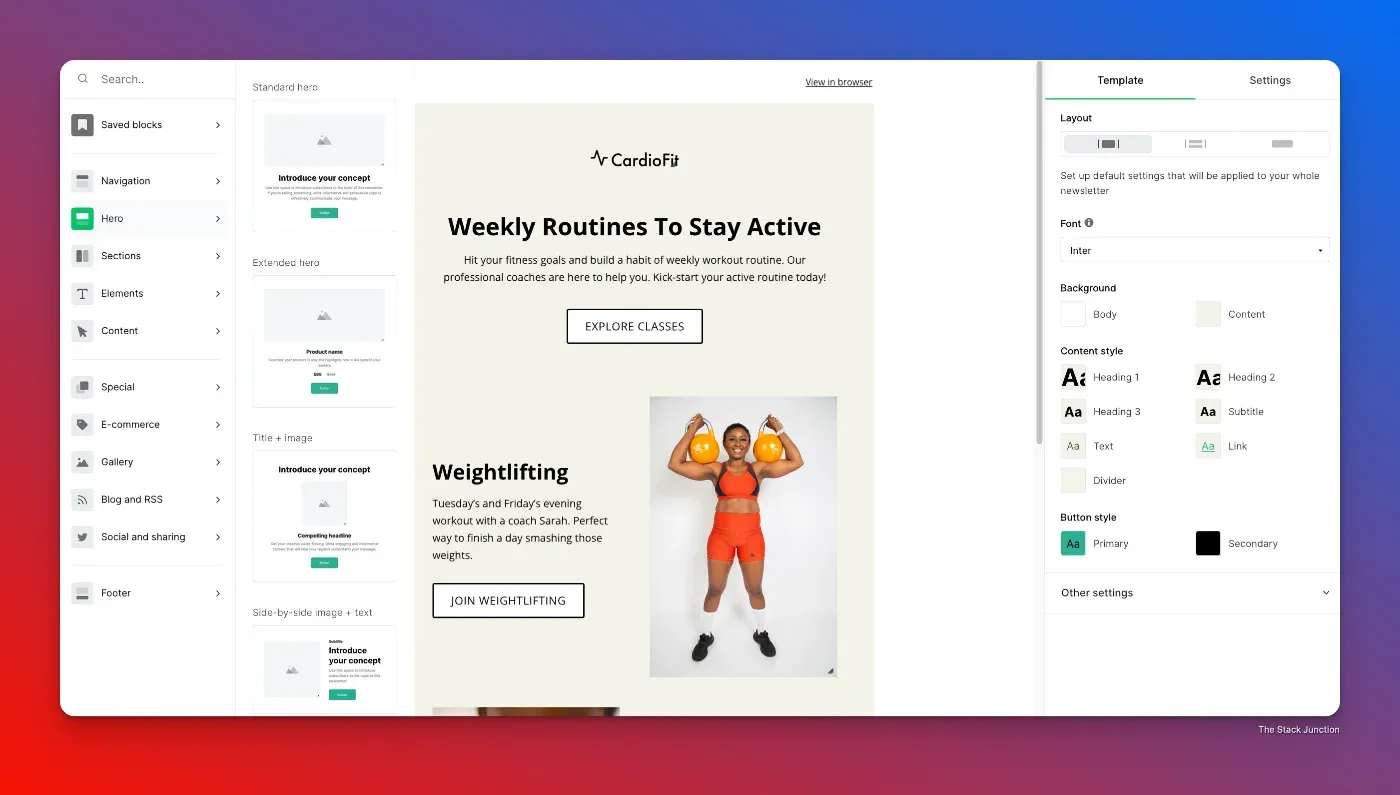
I love the variety of blocks in the MailerLite editor.
They have lots of hero section options with buttons, and images, grid layouts, e-commerce products, and much more.
Whether you want a simple and clean newsletter that is mostly text or a more complete one that will make any serious business proud, MailerLite has your back!
Yet, I must warn you that sometimes MailerLite has some glitches with keyboard shortcuts or when you want to move text around. To avoid those things, I prefer to write in another tool and paste the final product before sending my newsletter.
Content Creation Category winner
When it comes to content creation, MailerLite totally knocks it out of the park compared to Kit.
The superpower of MailerLite? It handles custom code like a boss!
You can change your newsletter with CSS and JavaScript, which is something I found some inconsistencies on Kit.
Plus, MailerLite has a sweet version history, so if you mess up, you can roll back to a previous version.
The difference between the 2 tools is small, but I consider MailerLite the better option for content creation and writing at this moment.
Customization
Next comes customization and design.
Customization on Kit
Kit's customization summary:
- Newsletter templates: Yes;
- Newsletter customization options: Yes;
- Website themes: Yes;
- Possibility to buy a theme from a 3rd-party or create one with a custom code: Yes, from Palladio.
When it comes to customization, Kit is great!
Kit allows customizing almost everything on the newsletter side. For example, you can tinker with font colors, backgrounds, the styles of the buttons, and a lot more.
CK also makes customizing landing pages and forms really easy.

On top of that, CK has many design options for newsletters, landing pages, and forms. This can save you hours with Kit’s templates or simply get inspired by them.
And if all these aren’t wow enough, Kit also has content snippets which are blocks of content that you can reuse in different places, speeding up your content creation process.
With Kit, it’s possible to express yourself with ease and make your newsletter pretty without much effort.
Customization on MailerLite
MailerLite's customization summary:
- Newsletter templates: Yes;
- Newsletter customization options: Great and easy to use;
- Website themes: Yes;
- Possibility to buy a theme from a 3rd-party or create one with custom code: Yes, possible to create theme with custom HTML.
MailerLite has amazing customization options. You can basically do anything you want with your newsletters!
Their template gallery has many templates to choose from, and it’s easy to like at least one of the designs.

As a MailerLite user, I picked a template and customized it to my style. This saved me a lot of time instead of creating everything from scratch.
Changing a template is super easy to do with the Drag & Drop Editor and allows everyone to express their creativity without effort.
You can also save the templates for future use, saving time and effort to send future newsletters. I love this part as a MailerLite user!
Customization winner
When it comes to customization, it's a tie between Kit and MailerLite.
Kit is great as it lets users tweak almost every bit of their newsletters, landing pages, and forms.
And MailerLite matches Kit's energy!
Both have super easy drag-and-drop editors that make personalizing templates a breeze, and options to customize every little detail.
So, I don't think there is a significant difference between them as they are both elite.
Pricing
Now comes the cost of each tool.
Kit pricing
Kit pricing summary:
- Free plan: Yes;
- Cheaper paid plan: $9/month for 300 subscribers.
Pricing is one of the downsides of Kit, as their prices go up faster than some other alternatives like beehiiv or MailerLite.
Their pricing works in tiers: the more subscribers you get, the more you get billed.
However, Kit has a free plan of up to 1,000 subscribers.
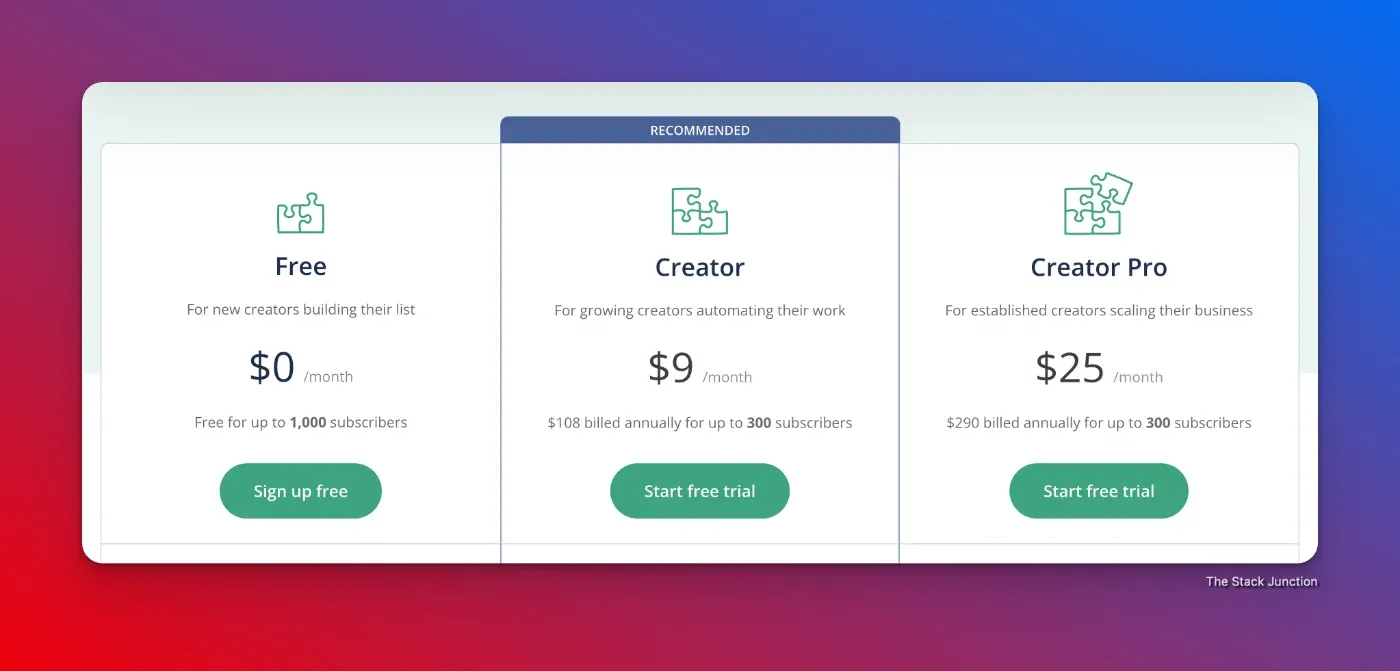
In general, this pricing strategy is helpful for beginners because it allows them to pay a small fee for the tool when starting.
But as your following grows, so will your bill.
Paid plans start at $9/ month for 300 subscribers and grow until it becomes quite expensive.
To put it into perspective, Kit’s prices escalate more than other competitors with better blogging capabilities.
Yes, blogging isn’t really the heart and soul of Kit. And they're great at it but are making a lot of effort to improve.
MailerLite pricing
MailerLite pricing summary:
- Free plan: Yes, up to 1000 subscribers;
- Cheaper paid plan: $9/month (paid annually);
Like other emailing tools, MailerLite also has different plans to choose from.
In MailerLite, you can start with the free plan, which doesn't have many limitations beyond the number of subscribers.
This is a great deal for beginners because they can start a newsletter using a great tool like MailerLite without spending a fortune.
After that, the cheaper paid plan starts at only $9 per month. This will give additional features like the auto resend campaign and the option to sell digital products.
The Advanced Plan unlocks the custom HTML editor and a 15% discount on Google Workspace, just to name a few of the perks.
The pricing is pretty upfront and easy to understand: the more subscribers you have, the more you have to pay.
But MailerLite is still cheaper than most newsletter tools in the market.
Pricing category winner
When it comes to pricing, MailerLite is the better option, and it's not even close.
Both tools have free plans, allowing up to 1,000 subscribers, and the cheapest paid plans start at $9 per month.
But the MailerLite free plan is less restrictive, giving you access to almost all of their tools.
For creators with larger audiences, the pricing difference becomes huge.
For example, 5,000 subscribers will cost $66/month on Kit and $35/month on MailerLite.
So, if pricing is a decisive factor for you, the option is clear: MailerLite is cheaper.
Monetization
Now, I'll analyze the options to make money with each platform.
Monetization options on Kit
Monetization options on Kit:
- Memberships: Yes;
- Display ads (Programmatic advertisement): No;
- Digital products: Yes;
- Sponsorships/ Marketplace ads: Yes;
- Donations/ Tips: Yes;
- Manual embed ads on content: Yes;
- Affiliate marketing: Yes.
The “Earn” tab in Kit reveals all the ways you can monetize your content: paid newsletter, selling digital products, and sponsorships (via Kit Sponsor Network, aka CKSN).
Most creators make the bulk of their revenue via paid subscriptions and sponsorships.
Kit allows you to maximize earnings because you can easily create a paid newsletter. And if you are approved to the Sponsor Network, you’ll have an easy path to finding sponsors.
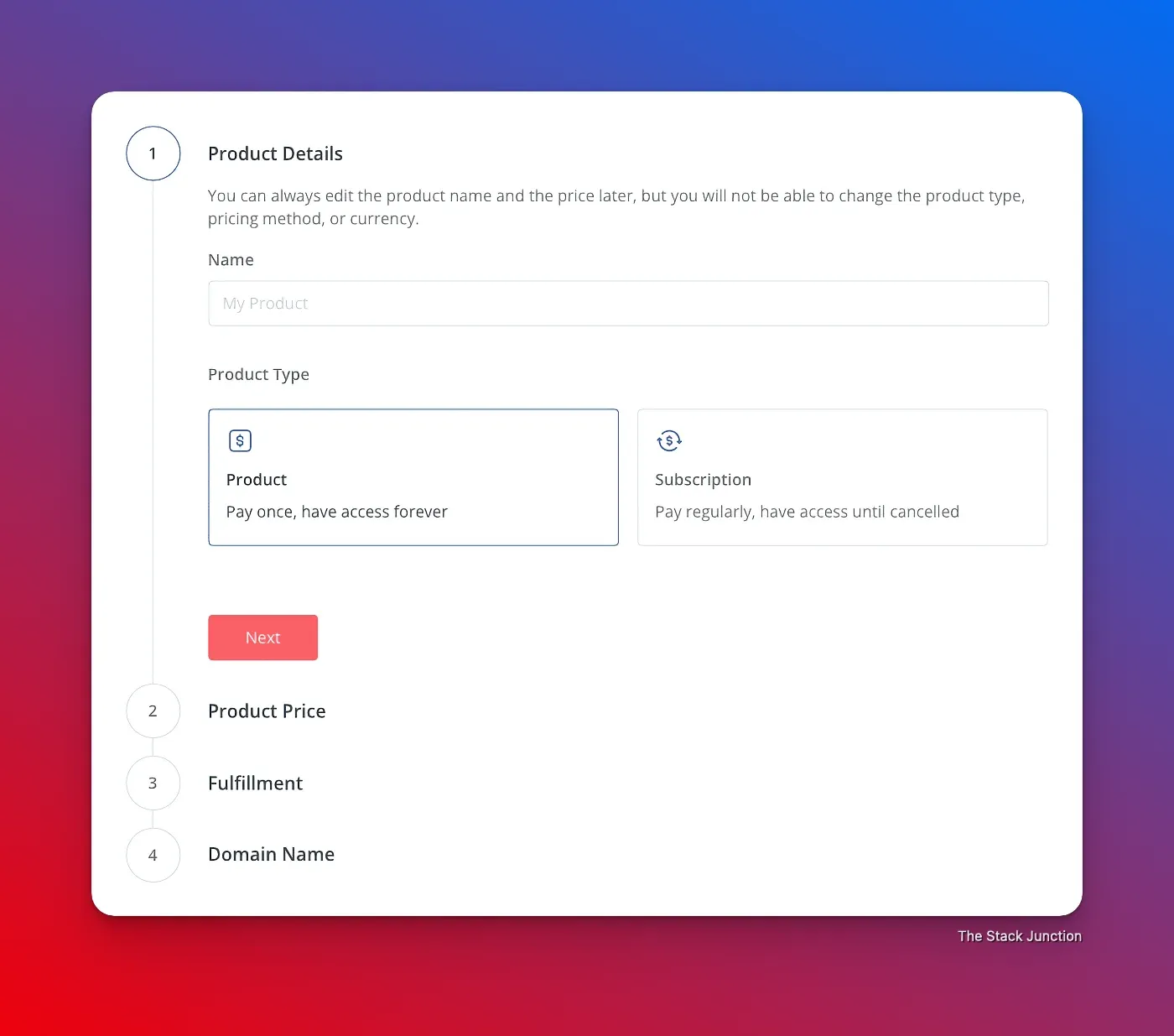
On top of that, Kit also allows you to sell digital products. Apart from newsletters, you can also use Kit to sell e-books, and coaching/consultations, just to name a few ideas.
Monetization on MailerLite
Monetization options on MailerLite:
- Memberships: Yes;
- Display ads (Programmatic advertisement like Adsense): No;
- e-Commerce / Digital products: Yes;
- Sponsorships/ Marketplace ads: No;
- Donations/ Tips: No;
- Manual embed ads on content: Yes;
- Affiliate marketing: Yes;
MailerLite has many monetization options for creators.
I would say that ML is similar to Kit by allowing you to sell any kind of digital product (paid newsletters, e-books, courses, etc.). You can set up those as a subscription or a 1-time purchase.
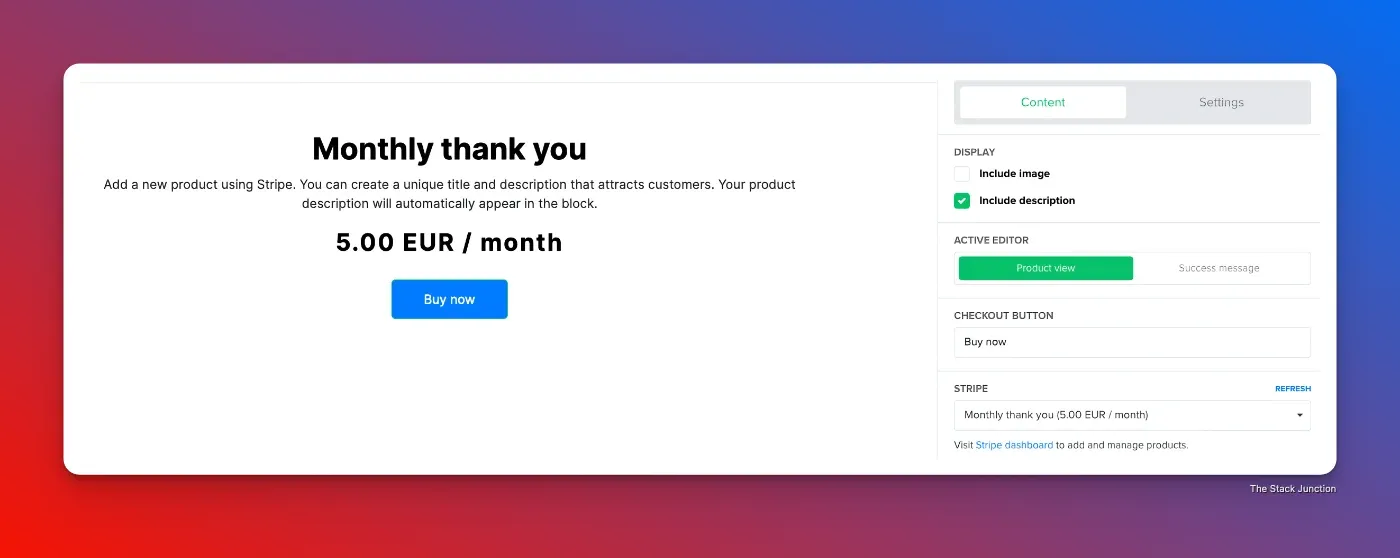
The most commonly used method of selling digital products is a paid newsletter, where subscribers have to pay to receive the content, similar to how it works on Substack or Ghost.
However, what is noticeably missing in MailerLite is an advertisement network.
You can still put ads in your newsletter, but you will have to be the one chasing sponsorships because MailerLite doesn't have a native Ad Network.
Monetization category winner
When it comes to making money from your content, Kit wins over MailerLite.
Kit gives you better tools to run a paid newsletter and monetize it with ads.
The Kit Sponsor Network is a clear advantage over MailerLite.
This Sponsor Network will make it easier to earn money without having to deal with the hassle of negotiating and chasing the advertisers for payment.
Also, Kit is better for selling digital products.
MailerLite is lackluster when it comes to paid memberships, so go with Kit if you wish to run a paid newsletter.
SEO
Now, I want to analyze the search engine optimization (SEO) of these tools.
Kit SEO
Important SEO features checklist for Kit:
- Custom domain: Yes;
- HTTPS: Yes;
- URL slug customization: No;
- Meta description: No;
- Sitemap: No;
- Canonical tags: No;
- Redirects: No;
- Robots.txt: No;
- Website speed: Good;
SEO isn’t exactly Kit’s strongest suit.
Kit was (and is) mostly a newsletter tool. And for many years, it never had blogging capabilities.
As I write this, Kit is below average when it comes to blogging.
Their creator profiles are more like a Link-in-bio tool than a blogging option.
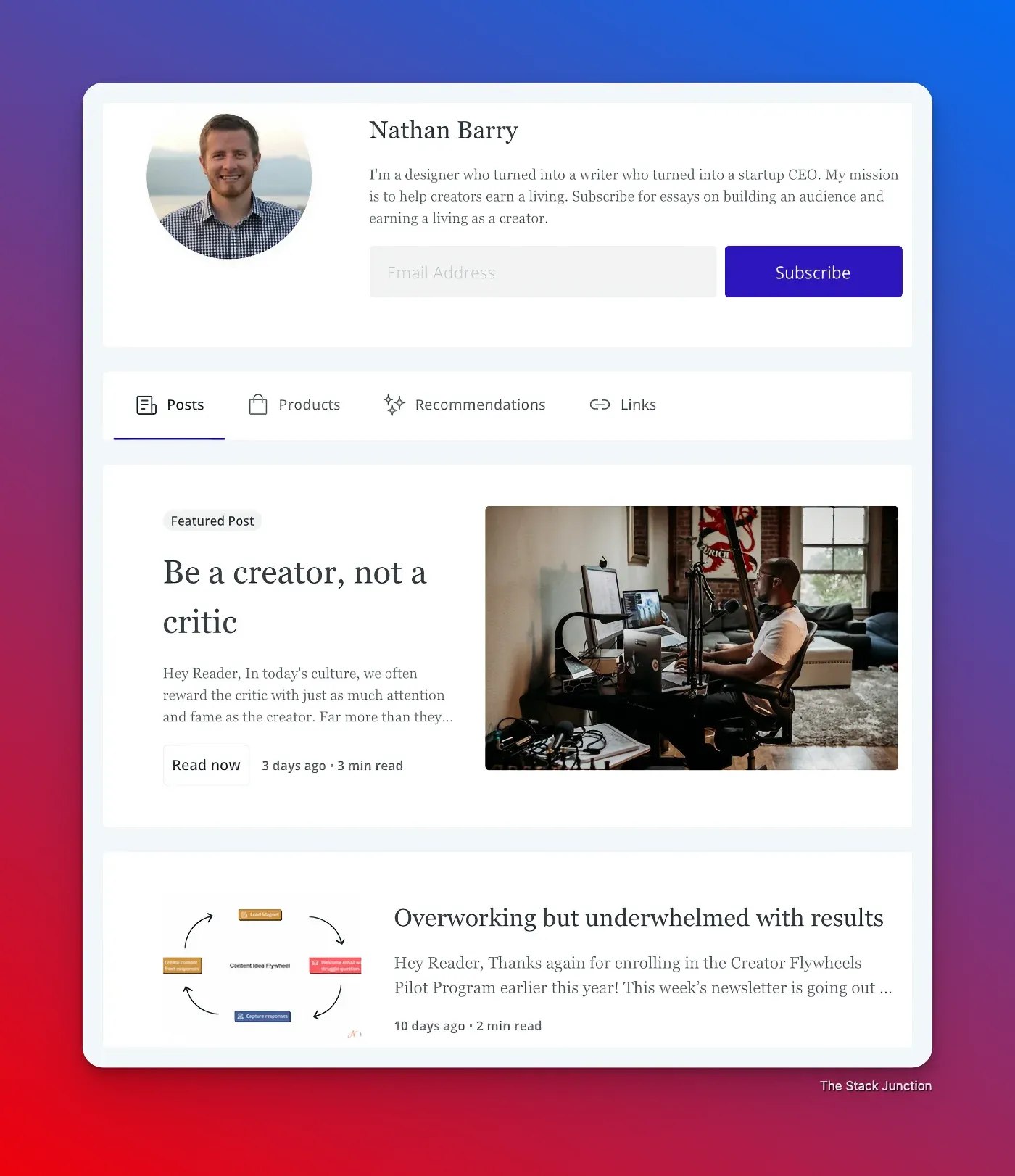
There are a lot of things missing with the creator profiles on Kit for them to be a valid alternative to Ghost or WordPress.
I don't know if Kit will ever become a great blogging tool with strong SEO. So, I recommend using Kit paired with another blogging tool for the best SEO results.
MailerLite SEO
Important SEO features checklist for MailerLite:
- Custom domain: Yes;
- HTTPS: Yes;
- URL slug customization: Yes;
- Meta description customization: Only for home page;
- Sitemap: No;
- Canonical tags: No;
- Redirects: No;
- Robots.txt: No;
- Website speed: Good;
MailerLite has a lot to catch up on in terms of SEO.
To be fair, MailerLite is mainly a newsletter tool, so they didn't need to have good SEO to be a great service.
However, they have introduced some blogging capabilities to MailerLite. This will make it possible for creators to use MailerLite as a newsletter and blog, similar to Substack.
And similar to Substack, MailerLite leaves a lot to be desired regarding SEO.
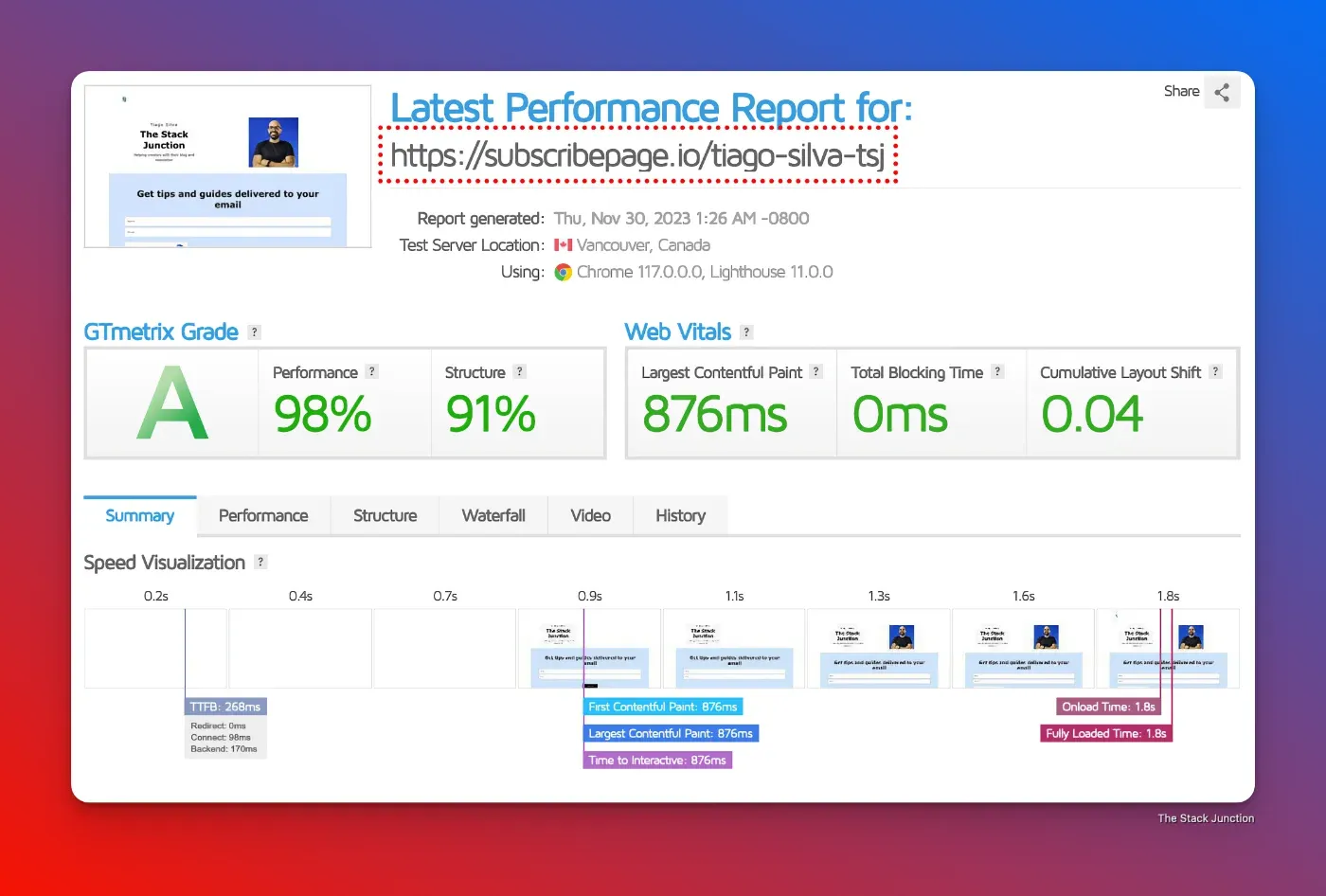
From what I can see, MailerLite doesn't have the tools needed for a creator to make a blog and find success ranking well on search engines.
MailerLite doesn't have important things like redirects, let us define canonical tags, and a lot more.
At the moment, MailerLite SEO only has the bare bones.
SEO category winner
MailerLite is only okay when it comes to SEO, but it's clearly better than Kit.
I don't think you should use any of these 2 tools if your main goal is to rank high on Google. Well, you're reading this article because you're looking for a newsletter, but I still have to make this clear!
Having that said, MailerLite gives you more options to optimize the public display of your newsletter on the web.
MailerLite lets customize URL slugs, and meta descriptions, which are 2 basic things Kit doesn’t let you do.
Growth
Let's compare the tools when it comes to growth tools. These are the small marketing things that can have a big impact on the business.
Kit growing tools
Kit most important Growth tools checklist:
- Plugins/integrations: Yes;
- Automated email sequences: Yes;
- Referral program: Yes;
- Subscriber segmentation: Yes;
- Custom sending domain: Yes;
- A/B testing (titles): Yes;
- RSS feed: Yes;
Kit has fantastic tools to help newsletters grow!
From integrations with blogging tools; to having email automation to help make more money; or simply testing different newsletter titles to improve the open rate, Kit has them all.
That's a lot!
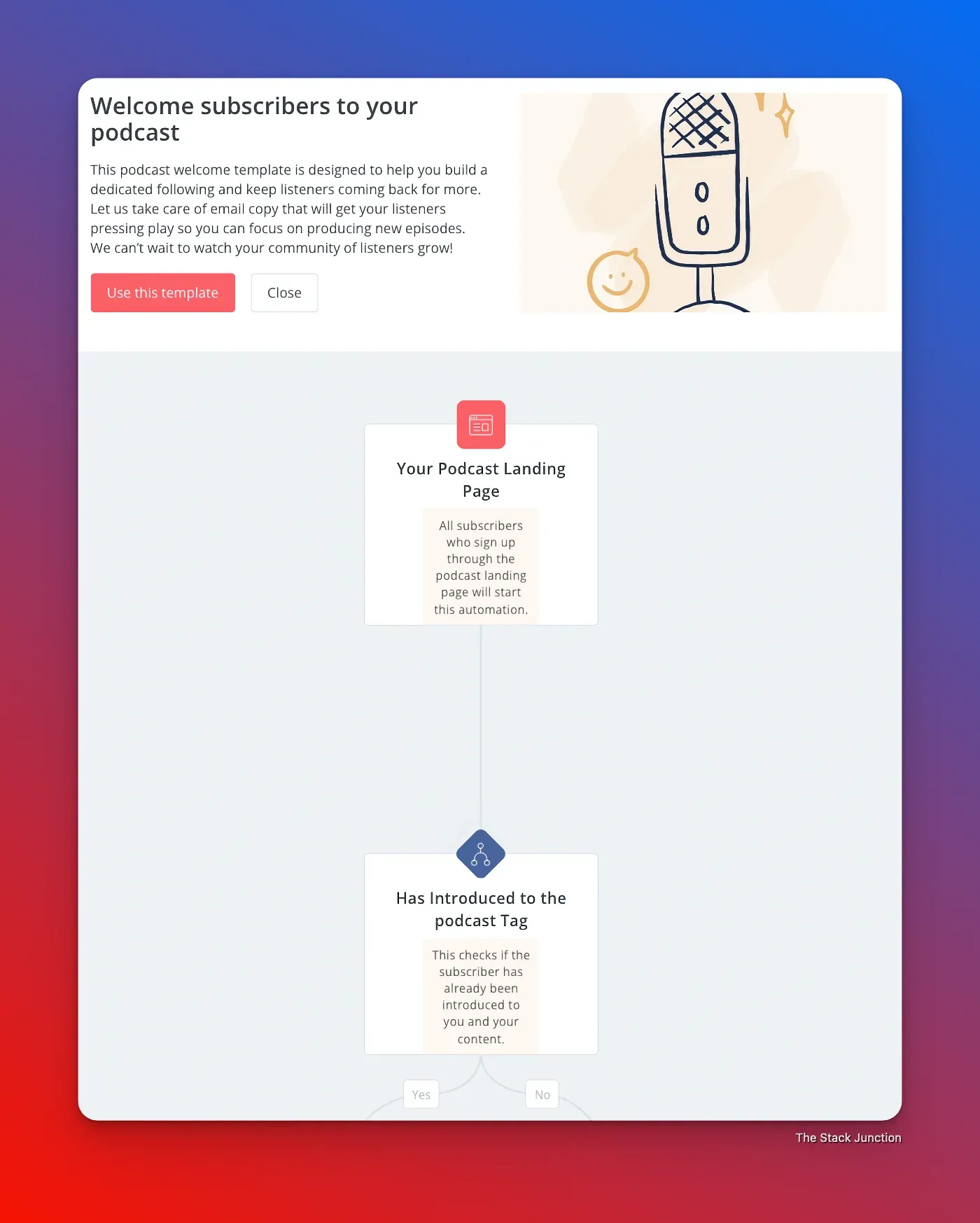
When I tell you Kit is really for newsletter growth, I'm serious.
You can also use Kit to create subscription forms to put on other websites. This will also help grow the newsletter by earning subscribers from a blog.
Kit even integrates with SparkLoop, which allows you to create a referral program for your own newsletter.
For those reasons, Kit gets a great score in this category.
MailerLite growth tools
MailerLite's most important Growth tools checklist:
- Plugins/integrations: Yes;
- Automated email sequences: Yes;
- Referral program: Yes, with integration;
- Subscriber segmentation: Yes;
- Custom sending domain: No;
- A/B testing (titles): Yes;
- RSS feed: Yes;
MailerLite growth capabilities are impressive.
The thing I like the most is their automated email sequences. This lets you create welcome email sequences where you can introduce yourself to new subscribers over the first days. Or even send abandoned cart emails to remind people about products they where thinking about but didn't buy.
You can use these automations for a gazillion of things!
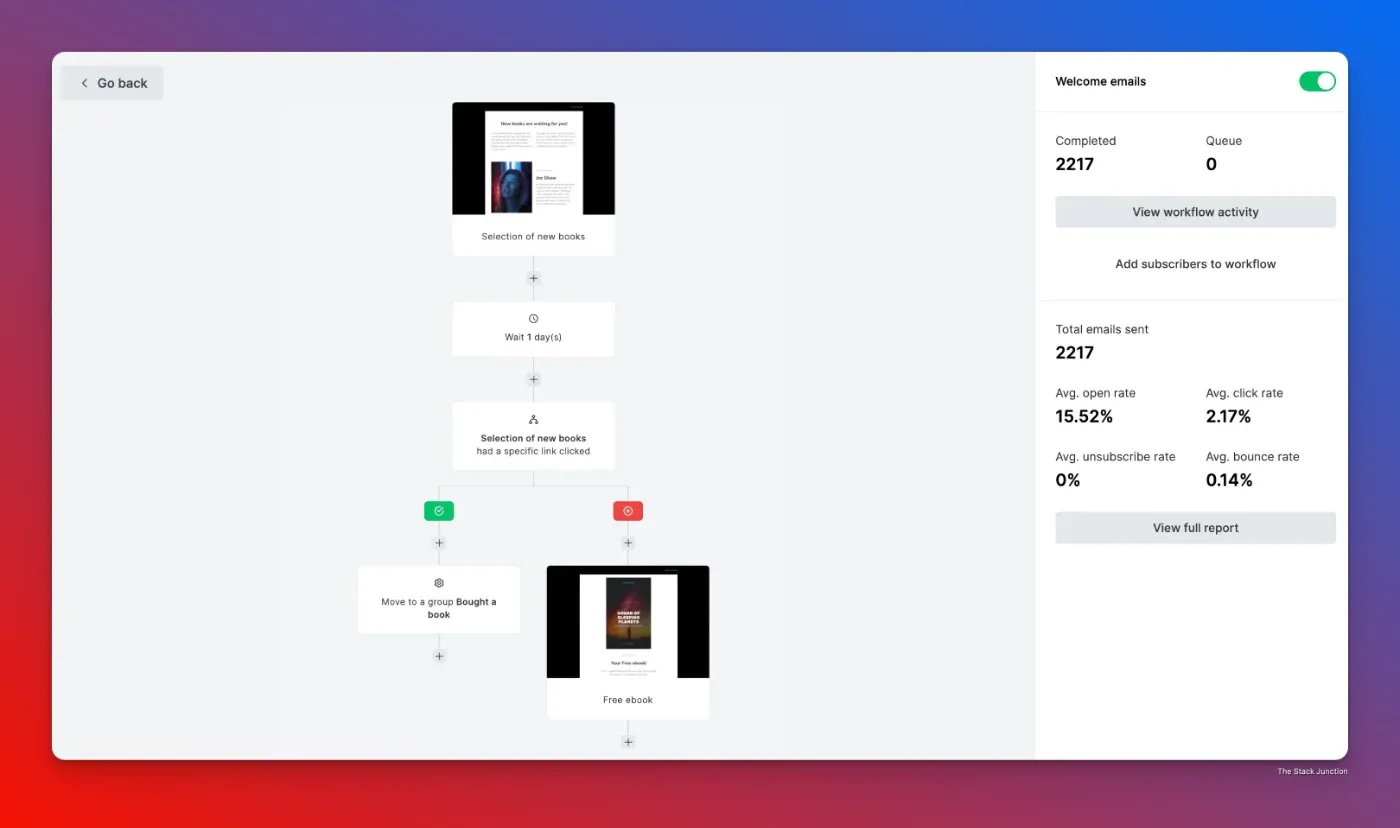
MailerLite also has a massive list of integrations, allowing you to use it in combination with other tools. For example, I use Ghost and MailerLite together. But you can integrate MailerLite with Shopify or even WordPress.
All those things, plus other small features, make it easier to grow the newsletter subscriber count.
Growth category winner
Kit takes the crown in the growth category.
What gives Kit the edge is its native referral program, which is a game-changer for spreading the word about your newsletter.
Another massive advantage of Kit is the recommendations system. This lets creators using Kit cross-promote each other's newsletters which will help them grow together.
This 'small thing' is making use of their network effects.
For the rest of the important growth tools, Kit and MailerLite are both great because they have integrations, automated email sequences, and A/B testing titles.
Final Thoughts
MailerLite and Kit are 2 popular email service providers for creators.
They are suited for beginners with their free plans and ease of use, while still powerful enough for professional creators to make a shit ton of money with their newsletters!
This comparison showed that Kit is better for creators focused on monetizing their content via their newsletters. CK is the clear option to monetize with paid memberships and ads.
Kit is also better than MailerLite when it comes to growth because of the referral program and recommendation system.
On the other hand, MailerLite is the right decision for creators who want a fantastic newsletter tool to pair with their existing blog.
For these creators, like me, MailerLite is fantastic because it is cheap, has great customization options, and we can use its automated email sequences to go along with our website content.
I love both tools and just showed you the bright and not-so-bright side of each one.





